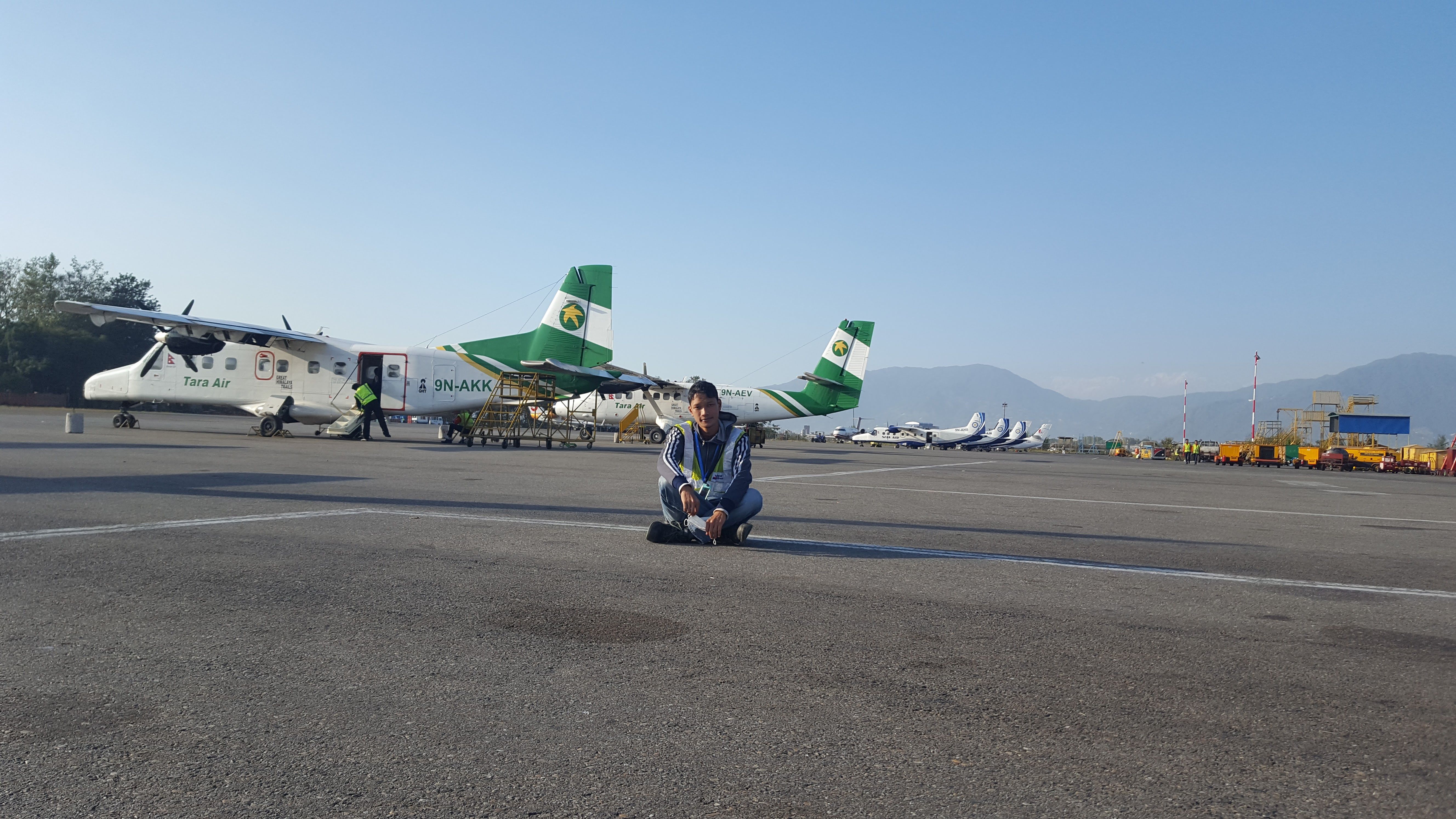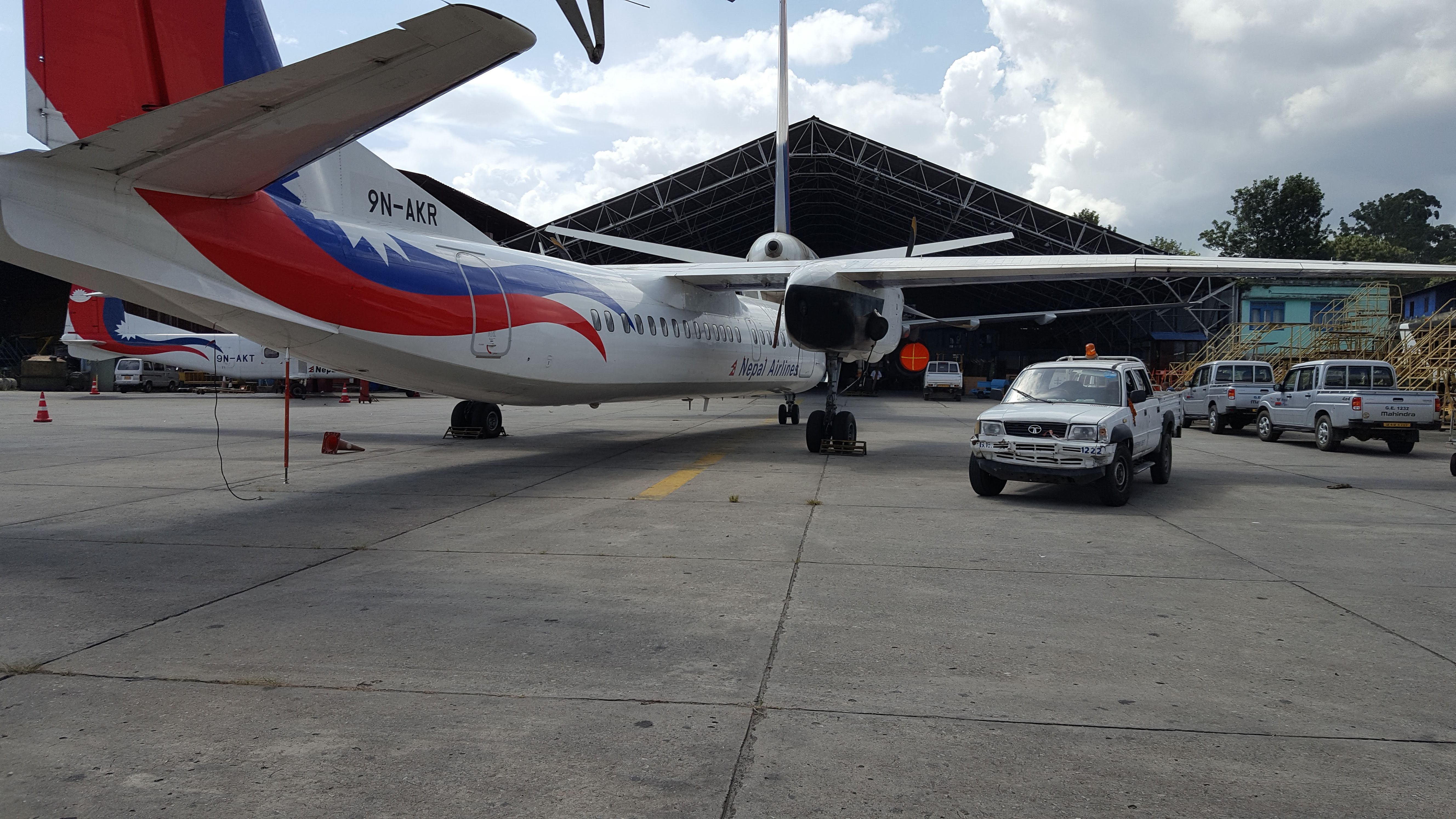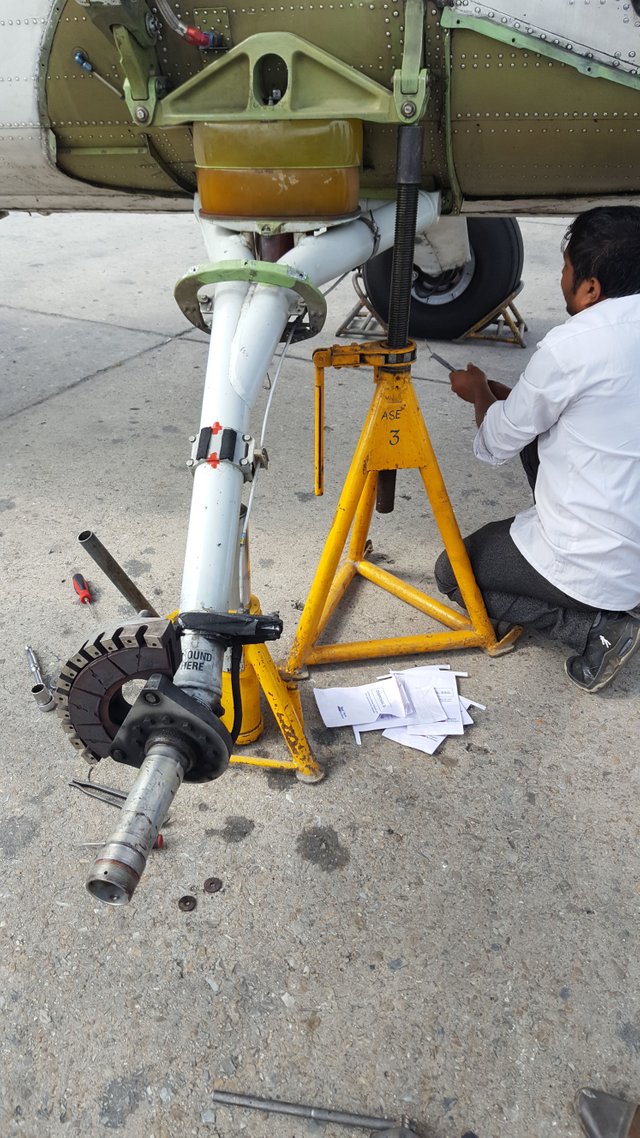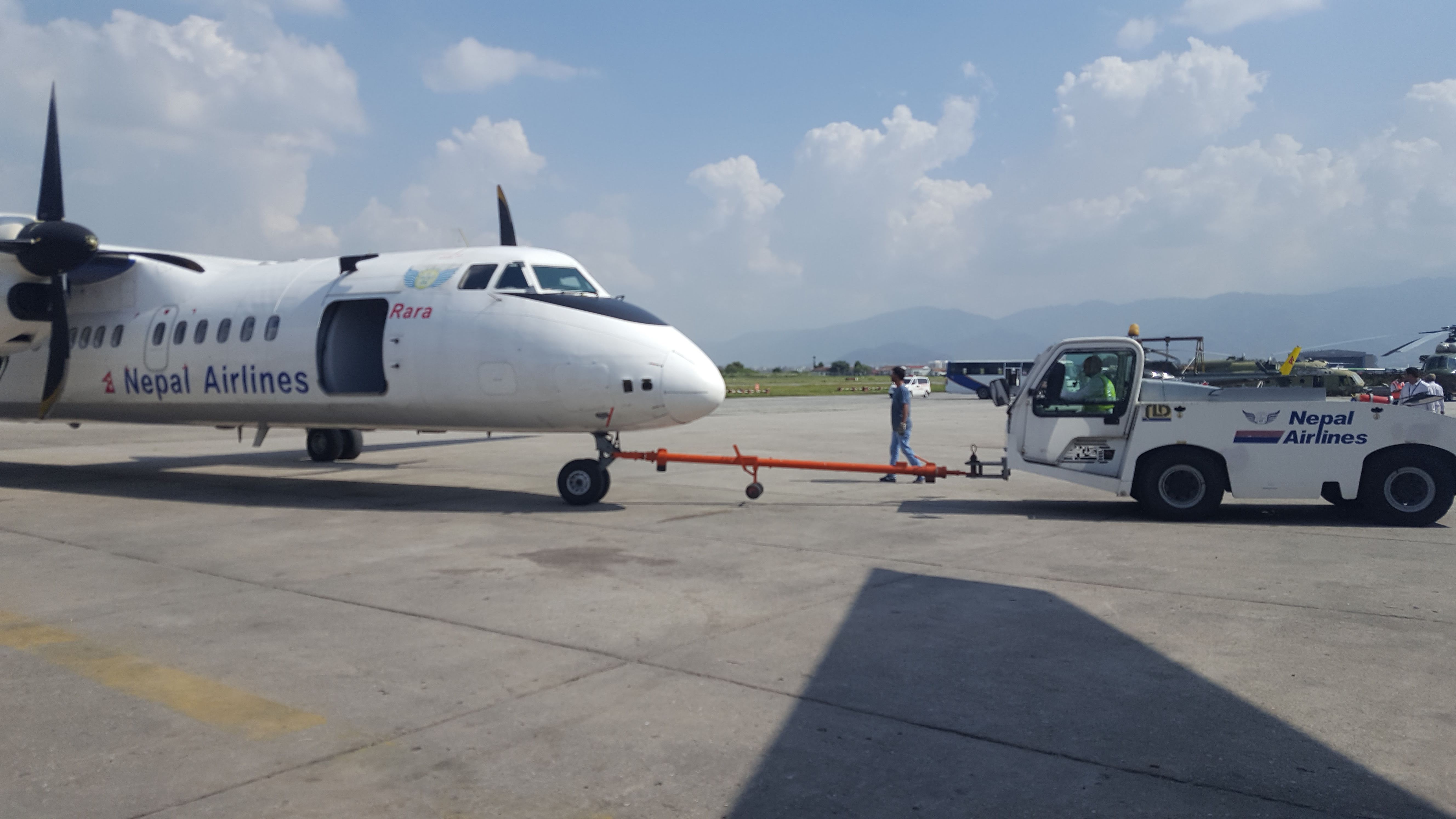GET HIGH SAFELY: Technical Alert!!!
GET HIGH SAFELY: Technical Alert!!!
Do you want to know what keeps you safe when you’re 30,000ft in the air and why the emergency door doesn’t open up on its own while you’re in an airplane? Well, I’m going to tell you. This might be a national issue and if this is wrong in anyway I might have to go back to honey hunting after this (To understand what I mean, you’ll need to go to my first post) [1].

So, a little more about me; I took up Mechanical Engineering after getting inspired by this well-known documentary. I don’t believe you have heard of this. It’s called “Iron Man”. Sadly, the documentary was not accurate.

But there are perks though. I had to intern at Nepal’s Tribhuwan International Airport. This is the only international airport in Nepal(Yes I have connections). So, in my time there, I was with my team of fellow documentary enthusiasts to perform various inspections and maintenance at the airport. Let me give you a brief overview of what we did there.
• A-check of Airbus A320 and Y12E
• Alignment of the urethane block in landing gear of twin otter
• C- check of MA-60
These are described below:
A-check of Airbus A 320 and Y12E

A check is scheduled maintenance check performed after every 400-600 flight hours. The aircraft wasn’t dragged into the hanger because it’s really huge in size and moreover this check only takes about 8-10 working hours to complete. The activities to be performed during the test vary from aircraft to aircraft so the manual of the airbus A320 was referred for sequential activities to be performed during the check. Generally, inventory maintains a healthy level of materials required and parts to be changed because these types of checks are common and are done in regular interval of time. Some of the activities performed during the check are:
i) The engines covers were lifted and visual inspections were done to notice any defects in wiring or other parts. Then both high and low-pressure oil filters were changed. After the filters were changed, the screw was sealed with a wire. Generally, all the nuts which often need to be screwed and unscrewed during checks are sealed with wire. It is done to prevent the risk of unscrewing of the bolt during engine operation due to engine vibration.
ii) Then the lubricants were checked. If the level of lubricant is below marked level or if the lubricant is depleted or contaminated, it is drained out and refilled. The lubricant used was Turbo oil 2197.
iii) Propeller blades were cleaned with cloth rinsed with warm water to remove carbon black and dust from its surface.
iv) Landing gears, wings flaps, hydraulics and other components which are in contact and are in constant relative motion were greased. The grease used was Aero Shell Grease 22.
v) Nitrogen gas was filled up into hydraulic pumps. It prevents extra heating of the landing gear during landing and also acts as fire extinguisher.
vi) Conditioned air was filled up inside the aircraft.
vii) Sensors like pitot tubes, drain tubes, antennas etc. were inspected and cleaned.
Alignment of the urethane block of twin otter
During daily scheduled inspection of a twin otter, one of the main landing gear was found somewhat defective. In twin otter, the landing gear is primitive type as it isn’t retraceable which definitely increases drag and hence is inefficient and also it isn’t loaded with some oleo or hydraulic, it has got two layers of urethane blocks as shock absorbers. So, urethane blocks can be considered one of the important components of the landing gear of twin otter.

On detailed inspection, it was found that the urethane blocks weren’t aligned properly due to which the upper urethane block has cut into the lower urethane block. The aircraft was raised up using pneumatic and manual pneumatic jacks and the landing gear was taken off the aircraft. After that the urethane blocks were unscrewed from their position. It was then found that the circular rod and plates which keeps the blocks in position were worn out which caused the holed in the blocks to widen out and misaligned. New blocks and plates were dispatched from the inventory and were assembled into its position and then screwed. The parts which need relative motion were greased and the nuts were sealed with wire.
- C- check of MA-60

It is also a type of scheduled preventive maintenance checks which is performed after about 7500 flight hours or 18-24 months, whichever comes first. As the MA-60 aircraft has flown for around 7500 hours, it was scheduled by the maintenance committee for C-check. This type of checks is much more extensive than A and B checks and may take bout 1-2 weeks. The aircraft was kept just outside the hanger during the maintenance period and different sequential inspections were performed as per the maintenance manual of the aircraft. As the maintenance was quite intricate and requires a lot of inspection jobs, all of which cannot be listed here, a few of the inspections performed are listed below.
i) The oxygen cylinders in the cabin were inspected.
ii) Cabin emergency lighting were checked.
iii) Other electronic devices like navigation systems, cabin emergency lighting etc. were inspected for faults. A subsidiary generator was connected to the aircraft mains during the check as it is considered a bad practice to use the aircraft’s battery power.
iv) Evacuation slide pressure was inspected.
v) Onboard medical kit, gallery equipment, spare life jacket etc. were checked.
vi) Tires along with landing gear were checked for wear and tear and some failure to meet safety criterion. During the check, the nose landing gear was found to leak some hydraulic oil. After overhauling the landing gear, it was found that the piston of the hydraulic oleo was worn out which causes the leakage. As the part wasn’t available in the inventory, it was ordered from Canada and two specialists were called from China to assemble the part precisely in correct position.
vii) Brakes, struts (wiped the chrome down with a cloth soaked in some type of chemicals to help the seals form leaking)
viii) The engine cover was taken off and its different components were inspected. The sensors were inspected, the exhaust was cleaned the propeller blades were cleaned.
ix) Inspected Strobes, position lightening, navigation lights, filled engine oils, engine oil and lubricant filters, etc.
x) Inspected magnetic oil chips detectors.
xi) Engine oils and lubricants were changed after inspection.
xii) The visible external damage in the wings, fuselage flaps, landing gears, empennage etc. was inspected.
xiii) The flaps, elevators, ailerons were lubricated.
xiv) The Auxiliary power unit of the aircraft was inspected for any faults.
Reference
Wow! your job must be really fun to do. An internship at international airport, you must be highly paid for it. Thanks to people like you for making us feel safe every time we travel through air.
Yes of course, it is paid internship
welcome sir.
"get high safely" haha......
thank you for commenting.
NICE! was always curious about what goes on in those "AIR-BUSES"
Thank you bro
Hope you did your part well, there are lots of life at risk at this kind of job!
yes of course. Thank you
I like how you've told details so elegantly. I think this post has been a great read.
Thank you so much. :D
Great information daaju Great going
thank you bro
Dami :)
dhanyabaad bro
You got a 14.17% upvote from @allaz courtesy of @bikkichhantyal!
Thank you @bikkichhantyal for promoting this post together with https://steemit.com/budget/@jerrybanfield/introducing-steem-budget-proposals
Wow! That's wildly complex. I realized that airplanes had a lot that went in them, but I don't think that I ever saw how much could go wrong before take-off before. Thank you for your insights and all the work that you put in!
Welcome and thanks for expressing your views.
Followed you. :)